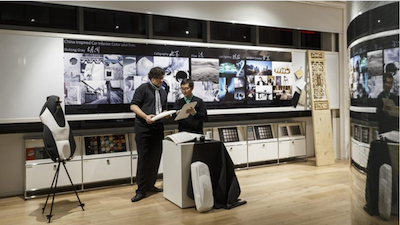China’s luxury consumer price index’s rate of increase is at a five-year high, according to a report from Hurun.
From June 2015 to June 2016, the luxury consumer price index increased by 5.1 percent, much higher than the standard consumer price index (CPI)’s 1.9 percent increase, per the National Bureau of Statistics of China. As prices increase, China’s upper classes are also growing in number and all consumers are maintaining confidence in the country’s economy, all good signs for brands.
“Luxury property, health and education drove up the Luxury Consumer Price Index this year, coupled with a decrease in the value of the Chinese Yuan against most of the major currencies,” said Rupert Hoogewerf, chairman and chief researcher of Hurun Report.
The luxury consumer price index (LCPI) is an alternative index measuring the annual change in prices for a basket of 124 goods and services across 11 categories: properties, health, education, travel, weddings, watches and jewelry, accessories and skincare, jets and yachts, leisure, high-end alcohol and tobacco and automobiles.
Price hike
Over the past decade, the LCPI has grown 75 percent, more than twice as much as the CPI. This year’s overall 5.1 percent increase signals a recovery after last year’s drop.
That recovery of the luxury property market, which dropped 1.9 percent last year, led all growth categories. Luxury home prices increased 13 percent, spurred by 57 percent growth in Shenzhen, China.
Watches and jewelry, cosmetics and accessories also rebounded from decreases last year, albeit not as substantially. In addition to the skyrocketing prices of Birkin bags (see story), diamond prices grew 6 percent and gold rebounded 8.2 percent.
Travel increased 5 percent, due in part to an increase in foreign exchange rates. The Japanese yen, U.S. dollar, Hong Kong dollar, euro, Australian dollar and Swiss franc all grew in value against the Chinese Yuan.
With China’s millennial generation coming of age and spending $65,000 annually on tourism, including $34,000 on travel shopping (see story), travel remains a prime opportunity for luxury brands in most sectors.
The only two sectors to experience price decreases were automobiles and liquor/tobacco, by 1.3 percent and 0.2 percent, respectively.
Seventy-four of the 124 products and services included in the LCPI measurement have a higher price; 26 have lower prices and 24 have stayed constant.
Even as prices increase, China’s luxury consumer class continues to grow. Hurun notes that in one year the number of consumers with at least CNY 10 million (slightly less than $1.5 million) grew by 11 percent, or 120,000 people – another record.
The number of consumers with at least CNY 100 million also grew. The count is now 78,000, a 16 percent annual growth.
Increasing wealth is maintaining confidence in the economy. While there was a sizable drop in the share of consumers “extremely confident” in the economy, 80 percent remain positive on it overall.
Growing numbers
With China’s fast growing economy, large population and growing taste for both travel and luxury goods Chinese residents will make 90 million outbound trips in 2020, with that number increasing by an additional 36 million over the following decade, according to a report by Euromonitor.
As reported in “How to Target Chinese Shoppers Abroad,” outbound trips have increased on average by an impressive 13 percent since 2000, helping China overtake Japan as the second largest consumer market in 2011. With the significance and size of the Chinese tourist market only projected to swell, brands will need to develop a more nuanced understanding of the market in order to reach consumers (see story).
Even as travel grows, brands need to strengthen their presence within the nation’s borders.
An L2 report published in May suggested that luxury brands can no longer forego a presence in China and hope to make up the difference with tourists.
Double-digit growth days are over in China, and even if it will continue to grow at rates that will make western countries envious, its domestic luxury market contracted in both 2014 and 2015. With China growing, brands will need to adjust to digital issues ranging from poor localization to varied pricing as they compete for a clearly finite market (see story).
from Apparel and accessories – Luxury Daily https://www.luxurydaily.com/chinas-luxury-goods-increase-in-price-as-affluent-classes-swell/
via Your #1 Source to Finding Luxury & Designer Goods, Handbags & Clothes at or Below Wholesale: Click Here.




No comments:
Post a Comment